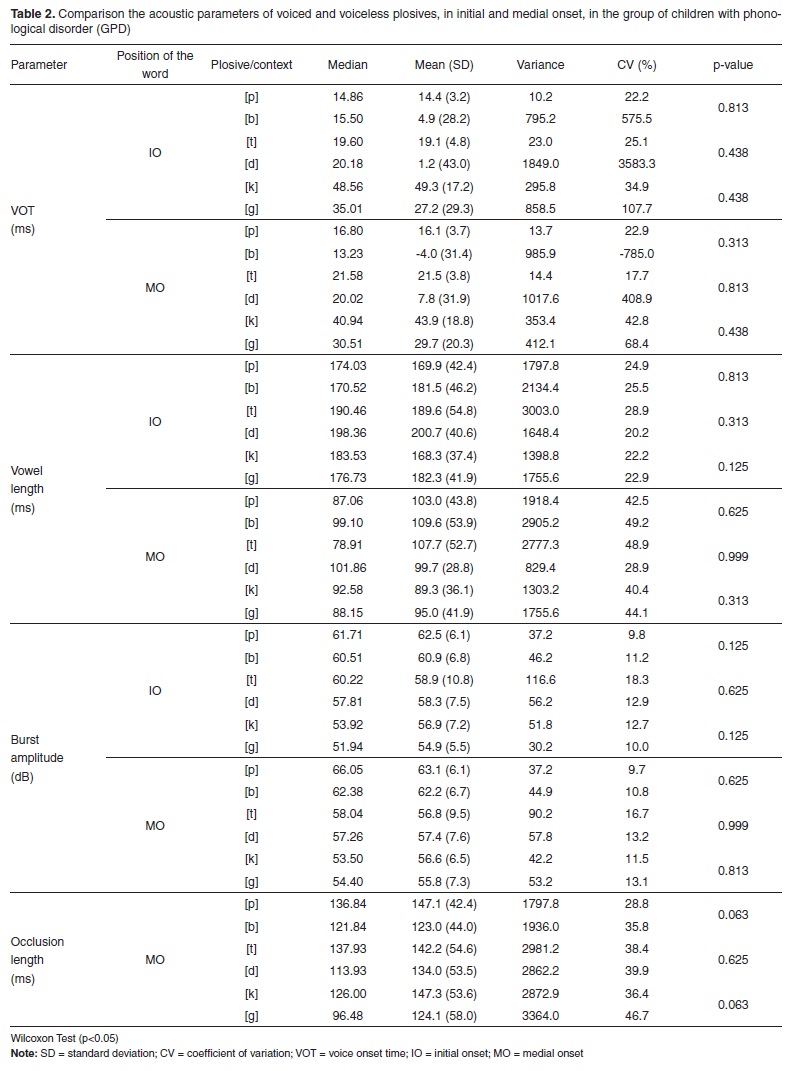PURPOSE: To investigate if children with phonological disorder present different acoustic characteristics of voiceless and voiced plosives from children with typical phonological development. METHODS: Participants were 11 children with typical phonological development and five children with phonological disorder and difficulty to establish the distinctive feature [+voice] of plosives. Through words (['papa], ['baba], ['tata], ['dada], ['kaka] and ['gaga]) inserted into carrier phrases, we measured voice onset time, vowel length, burst amplitude, and occlusion length of each plosive. The acoustic parameters of voiceless and voiced plosives were compared between and within groups through statistical analysis. RESULTS: The subjects within typical phonological development presented significant results mainly in distinguishing the parameters voice onset time, vowel length, and occlusion of voiceless and voiced stops, which was different from what was observed for children with phonological disorder. The comparison between groups showed differences related to the production of voice onset time and the occlusion length of voiced plosives. Regarding the other analyzed parameters, the values were similar between groups, with no statistical differences. CONCLUSION: The marking of the voicing contrast of the group with phonological disorder is different from the group with typical phonological development, especially regarding the voice onset time and the occlusion length of the voiced segments.
Speech acoustics; Child; Speech disorders; Sound spectrography; Speech; Child language





